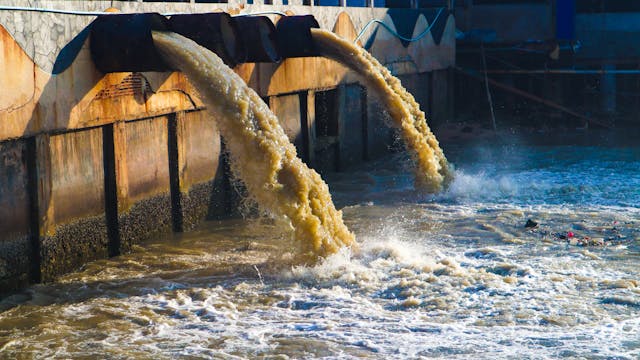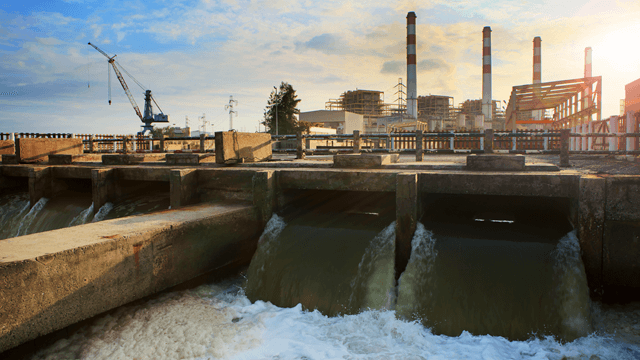Industrial Waste Water Treatment-- Enhance Effectiveness with Personalized Water Treatment Systems
Industrial Waste Water Treatment-- Enhance Effectiveness with Personalized Water Treatment Systems
Blog Article
Trick Strategies in Hazardous Waste Water Treatment Processes
The treatment of industrial wastewater is an essential facet of ecological administration, involving an array of methods developed to alleviate the influence of impurities. Innovations in innovations such as membrane layer purification and progressed oxidation procedures offer ingenious options for boosting therapy efficiency.
Physical Treatment Approaches
Exactly how successfully can physical therapy approaches deal with the complexities of industrial wastewater? Physical treatment methods play a critical duty in the initial phases of wastewater administration, concentrating mostly on the elimination of solids and huge particulates. Strategies such as sedimentation, flotation protection, and filtering are necessary for decreasing the concentration of put on hold solids, therefore boosting the efficiency of subsequent therapy procedures.
Sedimentation involves the gravitational settling of solids, permitting for the splitting up of much heavier materials from the wastewater. This approach is particularly effective in making clear water before chemical or biological therapies. Filtration, on the various other hand, uses various media to record particle issue, making sure that smaller pollutants are removed. This technique can be customized to suit various kinds of industrial effluents, generating clearer effluent streams.
Furthermore, flotation protection techniques, which make use of air bubbles to raise suspended solids to the surface for elimination, are efficient in treating wastewater with high focus of fats, oils, and oils. Generally, physical therapy approaches act as a crucial very first step in the detailed management of industrial wastewater, ensuring that the tons on subsequent therapy stages is lessened and enhancing general therapy effectiveness.
Chemical Therapy Techniques
While physical treatment methods lay the foundation for efficient wastewater management, chemical therapy techniques are important for attending to the much more complex pollutants commonly discovered in commercial effluents. These methods use different chemical agents to precipitate, counteract, or oxidize hazardous compounds, ensuring an extra extensive removal of pollutants.
One common technique is coagulation and flocculation, where chemical coagulants such as aluminum sulfate or ferric chloride are included in advertise the gathering of suspended bits. This procedure enhances solid-liquid splitting up, reducing turbidity and boosting water quality. In addition, neutralization processes are utilized to readjust the pH of wastewater, using bases or acids to neutralize acidic or alkaline streams, respectively.
Oxidation-reduction responses play an important role in degrading natural impurities and pathogens. Chemical oxidants like chlorine, ozone, or hydrogen peroxide are made use of to break down complex organic substances, making them much less damaging or extra biodegradable. Additionally, advanced oxidation procedures (AOPs) incorporate multiple oxidation techniques to improve contaminant removal performance.
Organic Therapy Procedures
The performance of wastewater therapy is significantly enhanced by biological therapy procedures, which harness the all-natural metabolic tasks of microbes to break down raw material and eliminate contaminants. Industrial Waste Water Treatment. These processes mostly entail cardio and anaerobic food digestion, each tailored for certain sorts of wastewater
Cardio therapy processes go to this web-site utilize oxygen to support microbial growth, promoting the breakdown of natural toxins right into co2 and water. Typical techniques include activated sludge systems, where oygenation tanks promote the blending of wastewater with bacteria, and trickling filters, which urge biofilm advancement on media surface areas.
Conversely, anaerobic treatment processes occur in the lack of oxygen, using anaerobic bacteria to decay organic matter, causing biogas manufacturing, a sustainable power source. Anaerobic digesters are usually utilized in industrial setups for this purpose, effectively lowering the quantity of sludge while producing valuable biogas.
The option of an organic treatment approach depends upon wastewater characteristics, therapy goals, and regulatory requirements. The integration of organic procedures in wastewater therapy not only boosts contaminant elimination effectiveness yet additionally promotes sustainability by decreasing chemical find more information usage and sustaining resource recovery.
Advanced Oxidation Processes

Usual AOP techniques include Fenton's photocatalysis, reagent, and ozonation. Fenton's reagent, a combination of hydrogen peroxide and ferrous iron, militarizes the formation of hydroxyl radicals, making it reliable for treating wastewater including phenolic substances and various other stubborn materials.
AOPs supply numerous benefits, including lowered sludge production and the capability to deal with wastewater with high focus of natural toxins. Nevertheless, the execution of AOPs calls for careful consideration of operational specifications and cost-effectiveness, making certain that these advanced techniques are appropriately incorporated into existing wastewater treatment systems.
Membrane Layer Purification Technologies

Microfiltration is effective for removing suspended solids and bacteria, while ultrafiltration targets smaller sized natural particles and viruses. Nanofiltration connects the void between ultrafiltration and reverse osmosis, successfully getting rid of divalent ions and organic substances. Reverse osmosis offers the highest possible degree of filtration, used mainly for desalination and eliminating mono-valent ions.
Membrane layer modern technologies supply various benefits, consisting of reduced power intake contrasted to traditional therapy techniques, modular layout for scalability, and the possibility for water recuperation and reuse. Challenges such as membrane layer fouling and the demand for normal maintenance must be addressed to ensure system efficacy. Overall, membrane filtering innovations represent a vital part of modern industrial wastewater treatment strategies, advertising sustainability and source conservation in water management.
Verdict
To conclude, commercial wastewater treatment employs a varied variety of strategies, consisting of physical, chemical, biological, and advanced approaches. Each technique plays a crucial duty in effectively dealing with various impurities, enhancing water quality, and promoting source sustainability. The integration of these strategies promotes an extensive therapy method, guaranteeing that commercial effluents satisfy governing criteria while minimizing ecological impact. Proceeded developments in these methodologies will certainly additionally boost the effectiveness and effectiveness of wastewater therapy procedures in commercial settings.
The therapy of industrial wastewater is an important aspect of environmental monitoring, involving a variety of techniques created to alleviate the impact of contaminants.Exactly go to this website how properly can physical treatment methods address the intricacies of industrial wastewater?Advanced oxidation processes (AOPs) stand for an innovative method in industrial wastewater therapy, developed to successfully weaken natural pollutants that are frequently immune to conventional treatment techniques (Industrial Waste Water Treatment).In verdict, commercial wastewater therapy uses a varied variety of strategies, including physical, chemical, biological, and advanced methods. Continued developments in these methodologies will certainly additionally boost the effectiveness and efficiency of wastewater therapy procedures in commercial setups
Report this page